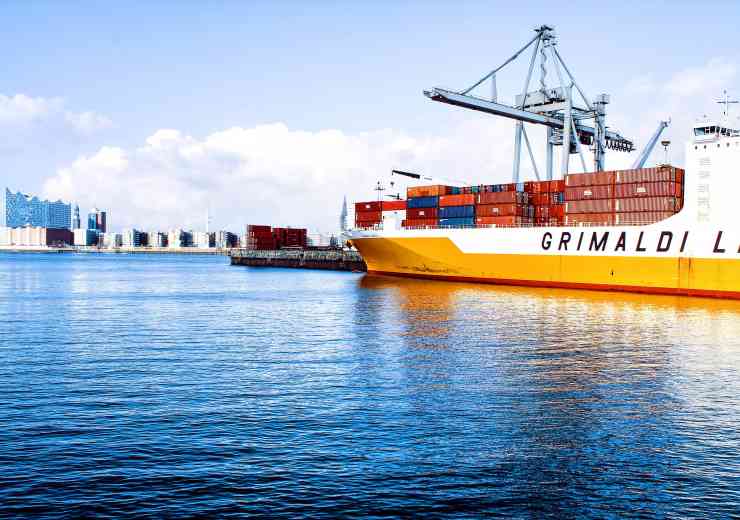Cargo security - a major challenge
Cargo security is a major challenge not only for the government agencies trying to contain the threat, but also for the commercial sector trying to remain competitive within the ever stricter policy confines. Although sea freight has been the primary focus for enhanced security measures in recent times, land border crossing stakeholders probably face even greater risks. Although more than 10 million containers annually enter the US through more than 350 river and sea ports, around 13 million trucks and railcars cross the Canadian and Mexican land borders each year. Europe faces similar volumes of transborder land transit, with over two billion tonnes of cargo traversing the road and rail networks in 2004.
Vulnerability or threat?
US and European security postures are vulnerability-driven, rather than threat analysis-based. This is arguably the easy route for determining security needs, since this relies on a finite examination of what could be done to the target, rather than risk based planning, which attempts to gather data and quantify the threat with an assessment of likelihood. The primary drawback of vulnerability-driven risk assessment is the sheer expanse of potential threats. To paraphrase Sherlock Holmes: Once you have eliminated the impossible, whatever remains, however improbable, must be a threat. This is the central tenet of vulnerability-based analysis; that any risk which cannot be ruled out must be treated as a real threat, which can leave providers of security spread too thin. Vulnerability theory also tends to drive requirements for a wide suite of essential mitigation measures to bolster supply chain security, whereas a threatbased system assesses likelihood and prioritises, before assigning mitigation treatment mechanisms within a predefined resource boundary.
There are sound arguments for both vulnerability and threat-based systems of security planning, but the sad truth is that there is no single answer. As the Irish Republican Army (IRA) statement warned after the Brighton Bombing in 1984, ‘we [the terrorists] only have to be lucky once. You will have to be lucky always.’
Complaining about inappropriate threat modelling is both unlikely to reverse the policy trend and is ultimately likely to be fruitless in an outcome-driven world. The universal goal of both business and government can be expressed as greater security without minimum compromise of profitability.
The methods of enhancing security are consistent with the philosophy of self preservation that demands that shippers examine the threats and re-orientate their efforts. Land transport is arguably the single most vulnerable cargo medium, due to the massive volume of traffic in motion at any given time and the almost infinite potential for external interference at any point in the shipment for smallscale cargo (compared, for example, to the physically limited opportunities to interfere with a sea-borne cargo container or air cargo). The potential has major implications for the cargo industry, which is, and will continue to be, expected to play a role in wider national and international security measures.
Land-based cargo shippers face threats from terrorism and weapons of mass destruction (WMD) proliferation. Terrorists, or non-state actors, pose an essentially physical threat to business, such as by attempting the theft of hazardous materials, including toxic chemicals, or using the shipment of legitimate cargo as a disguise for delivery of their own devices. The proliferation of technology and components used to produce WMD by ‘rogue states’, or non-state actors, however, raises a quite different threat, where a business may become known as a kind of ‘proliferators’ familiar’ and become inevitably subject to crippling sanctions and ‘blacklisting’. Regardless of whether authorities adopt vulnerability or risk-driven policies, good business practice alone suggests that land based cargo shippers must address security as a core strategy, ideally ahead of any regulation trend.
Terrorism
Vulnerability theorists are increasingly conscious of the ‘Trojan Horse’, where an otherwise innocent medium is transformed into a vector of terror by the unwitting or deliberate addition of a terrorist device. The theory suggests terrorists are at least equally likely to attempt introduction of devices (especially those of a nuclear or radiological nature) to the target nation, as to create the device in-country from locally available supplies. Thus, the border assumes an essential significance in the fight against terrorism and proliferation.
In addition to using existing shipping networks for their own purposes, terrorists may also be attracted to the possibility of deliberately causing industrial accidents. Transport and storage facilities for both bulk toxic chemicals and liquefied natural gas (LNG), for example, offer significant attraction, despite an historical lack of evidence to support the likelihood of such threats. Under vulnerability theory, however, the potential for these materials to be attacked suggests that transporters would be wise to guard against hostile acts as well as accidents.
Measures to combat this threat are complex, but should not be viewed as limited solely to the realm of government agencies. Companies can train their personnel, deploy integrated perimeter security at warehousing sites, and employ sophisticated but increasingly commonplace tracking systems for vehicles and containers, such as remote vision, seals, smart tags, and other sensors. Most importantly, however, response plans must be prepared and enacted. This vital element is frequently overlooked. Land-based cargo shippers have a significant advantage over their sea-borne counterparts, and can realistically emplace workable response solutions.
One of the more recent government industry responses to the threat of terrorism are security accreditation and recognition schemes, such as the US Customs-Trade Partnership Against Terrorism (C-TPAT) or the European Union’s (EU) Authorised Economic Operator (AEO) system. Shippers should, however, be aware of these double edged swords. If and when knowledge of a company’s accredited status reaches the public domain, cleared companies can realistically expect to become the target for the attentions of terrorists and proliferators alike, as these companies are seen as a means to indirectly defeat the stringent national border controls and screening methods being applied in countries like the US and the UK.
Proliferation
The vast scale of land border crossings and the open borders within EU especially, are attractive to proliferators who seek to disguise the origin of products and the intended final destinations. Proliferators will be especially eager to exploit any gaps in the export control regulations and practices of some nations, despite the theoretical homogeneity of EU controls.
Any company shipping and handling the materials and production equipment that can be used to produce WMDs are at grave commercial risk from the cargos they carry. The risks they are taking, mostly without their full knowledge or evaluation, go far beyond the physical risk of hazardous goods, as these cargos are accompanied by a corporate risk that can threaten the shipper’s commercial viability.
Assessment of these risks and appropriate mitigation strategies are becoming an essential part of modern business, where the threat is more tangible than a notion of contributing to the concept of national security. Ensuring the company does not contribute to the proliferation of WMDs is fundamentally synonymous with safeguarding the livelihood of the company and arguably the overall industry.
Conclusion
Regardless of national threat modelling methodologies, the lives and livelihood of land-cargo shippers are clearly threatened by terrorism and perhaps WMD proliferation. These threats are unlikely to diminish in the near future, and may even increase. As sea-port security is enhanced, land transport may become seen as the softer target for terrorists and proliferators, demanding that shippers recognise the threats and take appropriate action to mitigate the risk. Commercial responses must include end-to-end security concepts, secure facilities, manpower recruitment and training, sensors and communication systems. The tools to achieve this must go beyond perimeter tripwires and must also encompass integrated response capabilities.
About the author
Dr Guy Sadler is manager of Boartes Strategic Services, the world’s only counter proliferation (CP) consultancy. During nine years in intelligence and policy development as a senior Australian CP expert, Guy served throughout the Middle East and Asia and worked with governments all over the world.
Contact:
Dr Guy Sadler
Boartes Strategic Services
Email: guy.sadler@boartes.com
Web: www.boartes.com/StrategicServices.htm
This article first appeared in Cargo Security International
www.cargosecurityinternational.com
digital issue




















